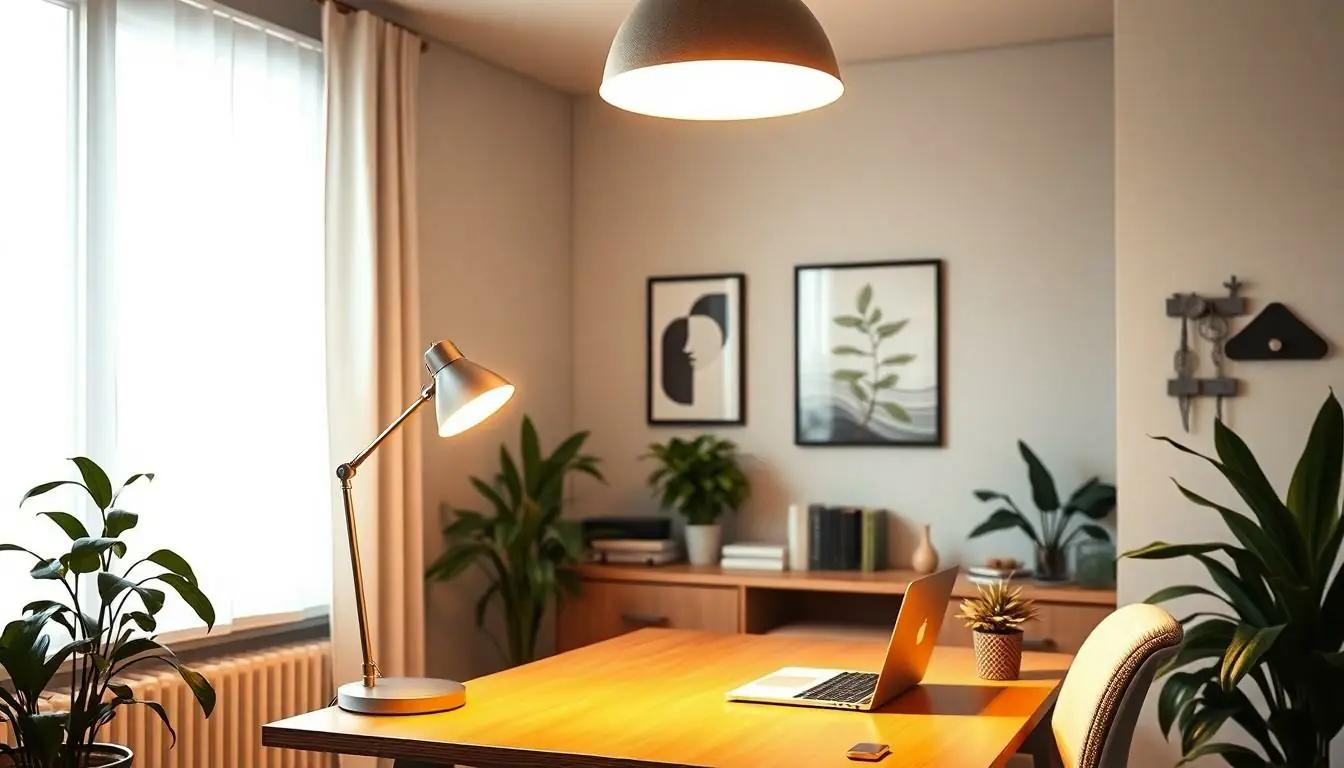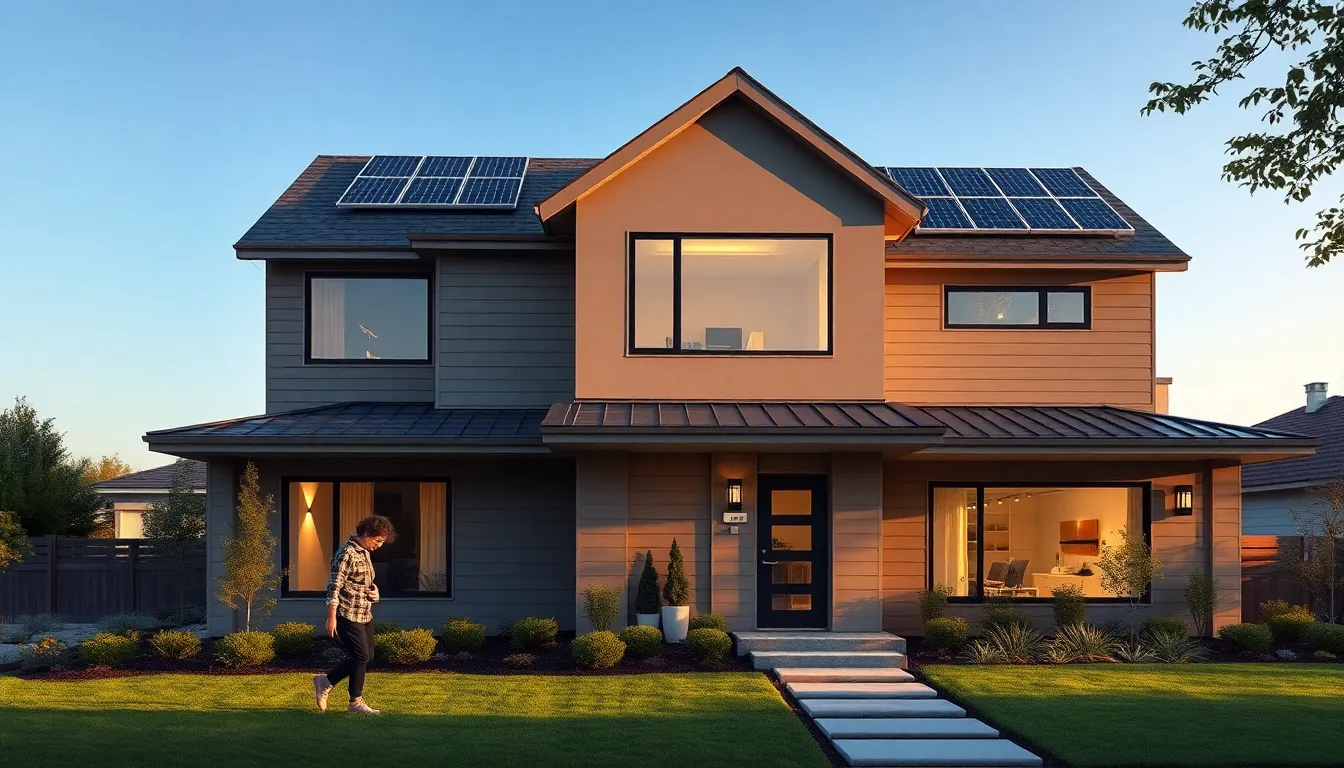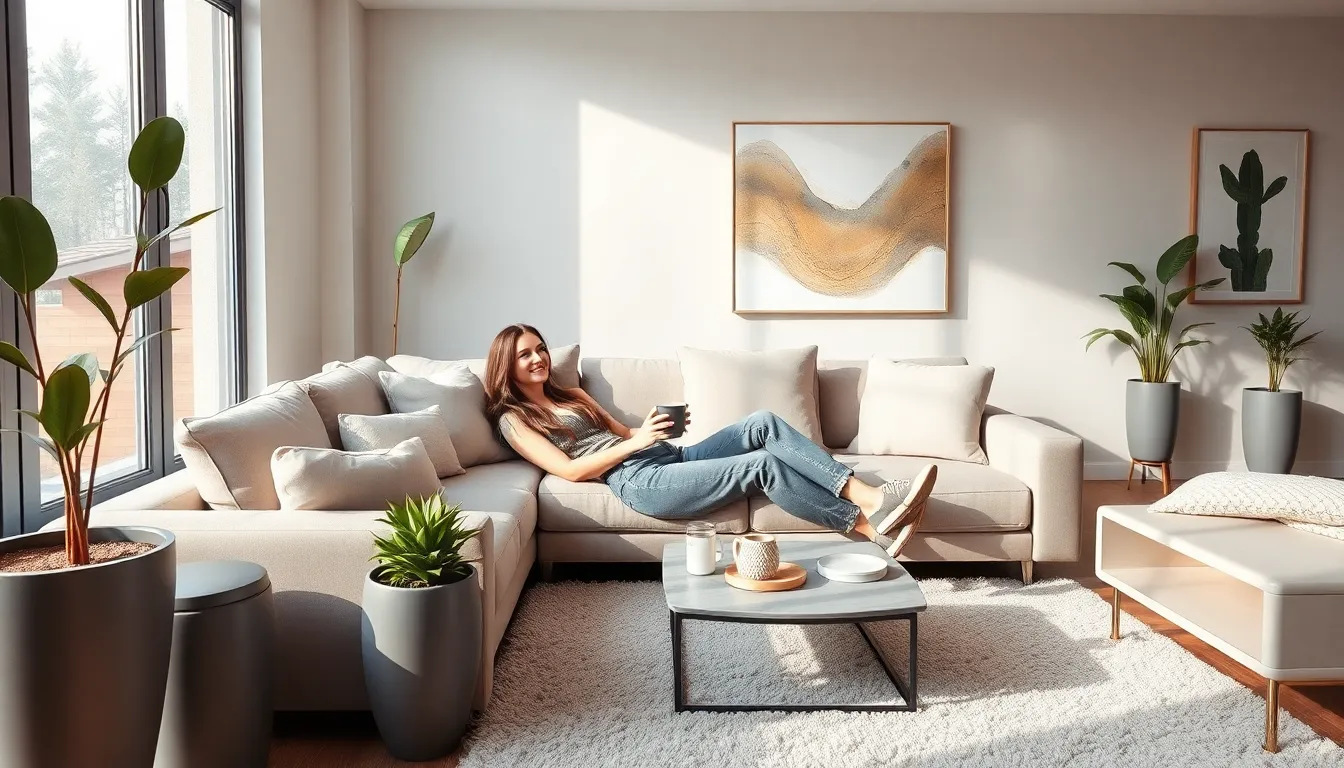In the world of remote work, a well-lit home office can be the difference between productivity and a midday nap on the couch. Imagine trying to focus on a project while squinting at your screen like a raccoon caught in headlights. Lighting isn’t just about avoiding eye strain; it sets the mood and boosts creativity.
Table of Contents
ToggleImportance Of Lighting For Home Office
Proper lighting plays a crucial role in creating an effective home office environment. It enhances focus and minimizes distractions, which is essential for remote work success.
Enhancing Productivity
Effective lighting boosts productivity levels significantly. Bright, well-placed light sources keep energy levels high throughout the workday. Task lighting, such as desk lamps, provides directed illumination for specific activities, promoting concentration. Natural light contributes positively, as exposure to daylight increases dopamine production, elevating mood and motivation. Installing adjustable fixtures allows for customization, meeting individual preferences as tasks change.
Reducing Eye Strain
Adequate lighting directly impacts eye comfort. Insufficient light can lead to eye strain, headaches, and fatigue, making long hours difficult. A mix of ambient and task lighting prevents harsh glares that can worsen these symptoms. Incorporating adjustable blinds allows for control over sunlight exposure, reducing harsh contrasts. Selecting bulbs with a color temperature of around 4000K mimics natural light and provides a balanced illumination for the workspace.
Types Of Lighting For Home Office

Different lighting types play distinct roles in a home office, enhancing functionality and comfort.
Ambient Lighting
Ambient lighting provides overall illumination in the workspace. Ceiling-mounted fixtures or floor lamps often serve this purpose. Soft, diffused light creates an inviting atmosphere, which helps minimize harsh shadows. Warm light bulbs typically set the right tone, making the space feel cozy without sacrificing visibility. Choosing adjustable fixtures allows for varying levels of brightness, catering to different tasks and times of day. Incorporating natural light through windows significantly boosts mood and energy levels, making it essential for productivity.
Task Lighting
Task lighting focuses on specific areas, enhancing visibility for detailed work. Desk lamps and adjustable fixtures provide direct light on the workspace, ensuring clarity for tasks like reading or writing. Bright, focused beams reduce eye strain, which is crucial during long hours of work. Selecting lamps with adjustable brightness or color temperatures can aid in personalizing the lighting experience. Positioning desk lamps to the side prevents glare and enhances visual comfort, promoting a more effective work environment.
Accent Lighting
Accent lighting adds depth and character to the home office. It highlights design elements like art pieces or architectural features, providing visual interest. Wall sconces or LED strip lights can create ambiance around bookshelves or workspaces. This type of lighting enhances the overall aesthetic, making the office feel more inviting. Layering accent lighting along with ambient and task lighting creates a well-rounded lighting scheme. Using dimmable options allows for adjusting intensity, which can match personal preferences or tasks at hand.
Lighting Placement Strategies
Effective lighting placement enhances the home office experience by optimizing both functionality and comfort. Strategic positioning of lights plays a key role in ensuring a productive workspace.
Desk Area
Focus on task lighting in the desk area to illuminate work tasks. Position desk lamps to eliminate shadows cast by monitors or documents. Bright, adjustable LED lamps provide suitable illumination for detailed work. Furthermore, consider using a light with adjustable color temperature to match the changing light conditions throughout the day. Placing a desk near windows encourages natural light entry, further boosting mood and productivity. Utilize blinds to control glare, ensuring that light levels remain comfortable.
Meeting Spaces
In meeting spaces, layered lighting creates a collaborative atmosphere. Use ambient lighting to set a warm tone, complemented by adjustable fixtures to highlight participants. Recessed lights or overhead fixtures deliver overall illumination while ensuring everyone is visible. For focus during presentations, consider adding spotlights or directional lights to draw attention to important visuals. Soft, diffused light helps maintain a professional yet inviting environment, making discussions more engaging and productive. Incorporating features such as dimmers offers flexibility based on the time of day and meeting dynamics.
Tips For Choosing The Right Lighting
Selecting the right lighting enhances a home office’s functionality and comfort. Consider the following aspects to optimize the workspace.
Color Temperature
Color temperature impacts mood and focus. Look for warm white lights, ideally between 2700K and 3000K, which create a cozy atmosphere suitable for relaxation and creativity. Cool white lights range from 4000K to 5000K, enhancing alertness, making them ideal for detailed tasks. Mixing different color temperatures can balance visual clarity and comfort. Experiment with smart bulbs capable of adjusting color temperatures to find the perfect blend, allowing for a versatile workspace that adapts to different tasks and times of day.
Dimming Options
Dimming options provide flexibility and control over lighting intensity. Adjustable fixtures allow for personalized brightness levels, catering to various tasks and moods. Use lamps with built-in dimmers or smart lighting systems that offer app control for convenience. Dimming reduces glare while complementing ambient lighting. Opting for LED lights is beneficial due to their energy efficiency and longer lifespan, promoting sustainability in the workspace. A well-lit home office benefits significantly from these adjustable solutions, enhancing comfort and productivity throughout the workday.
Creating the perfect lighting setup in a home office is essential for maintaining productivity and comfort. By combining ambient task and accent lighting, individuals can tailor their workspace to meet specific needs. The right balance of natural and artificial light not only enhances focus but also positively influences mood and motivation.
Adjustable fixtures and thoughtful placement can further optimize the environment, allowing for flexibility as tasks change throughout the day. Investing in quality lighting solutions ultimately leads to a more inviting and effective workspace, making remote work a more enjoyable experience. Prioritizing lighting can transform any home office into a hub of creativity and productivity.



